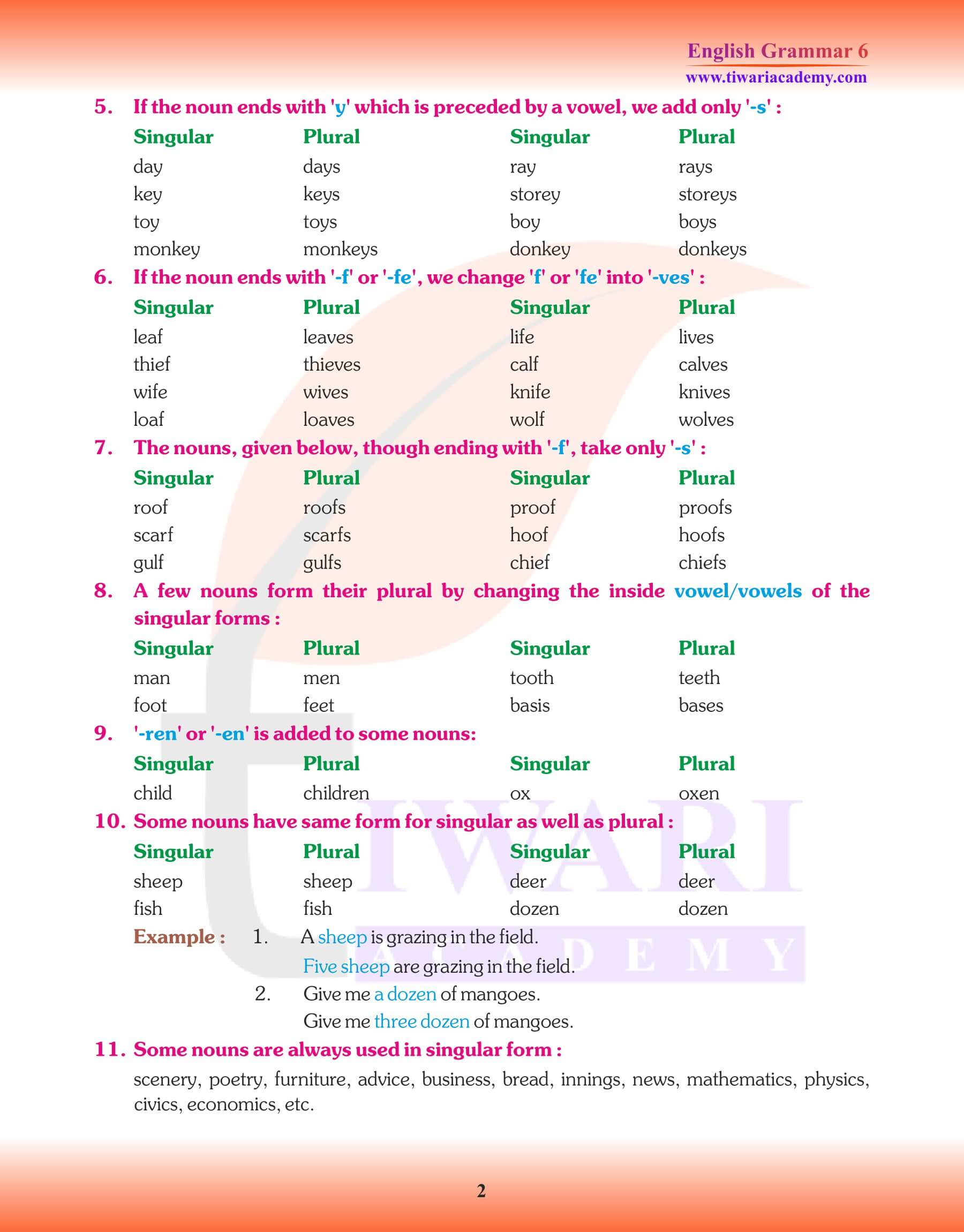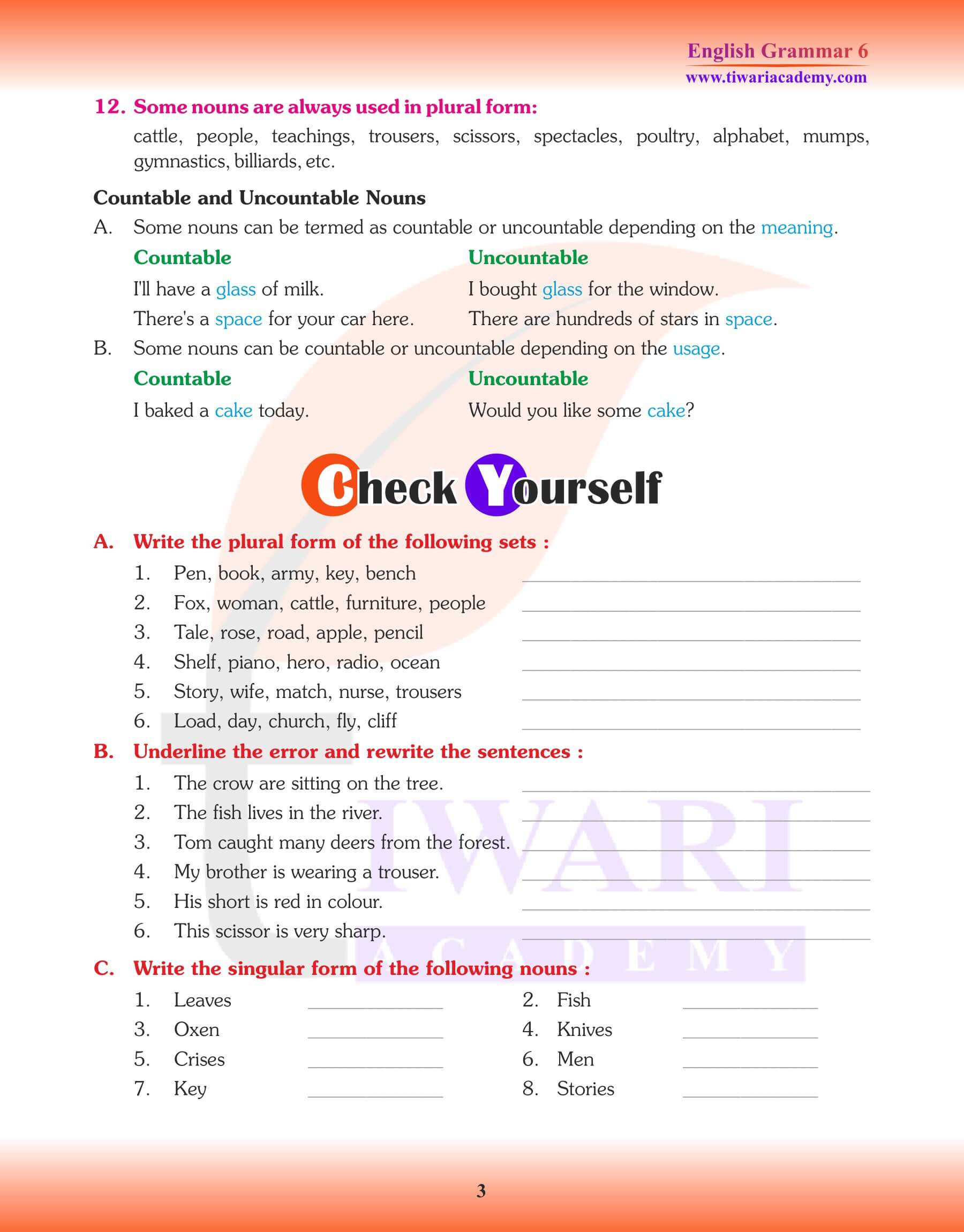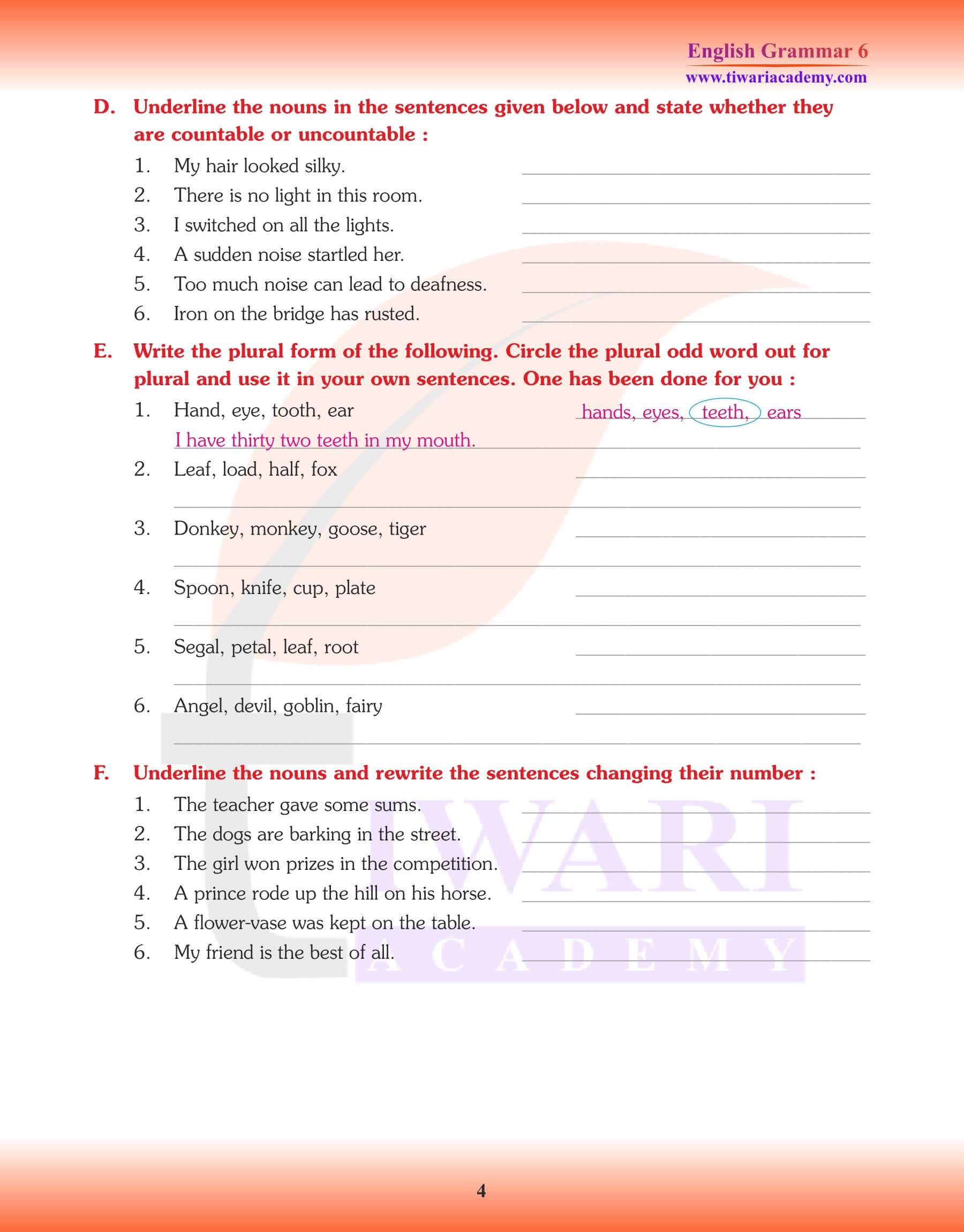Class 6 English Grammar Chapter 4 The Noun – Numbers. Nouns have two numbers: A singular countable noun always takes a or an before it. The Singular number and the Plural number. The word – number – refers to whether a noun is only one or more than one. A noun is said to be in the singular number when it is used to mean one person or thing: baby, toy, life, child, man, girl, doll, bus, mango etc. A noun is said to be in the plural number when it is used to mean more than one person or thing: babies, toys, lives, children, men, girls, dolls, buses, mangoes etc.
Class 6 English Grammar Chapter 4 The Noun – Number
Mastering the Concept of Noun Numbers in English Grammar
Chapter 4 of Class 6 English Grammar delves into a pivotal topic: The Noun Numbers. At the heart of understanding nouns lies the distinction between their singular and plural forms. Essentially, nouns in the English language come in two numbers: singular and plural. The term “number” in this context refers to the quantity a noun represents, be it one entity or multiple entities. When using singular countable nouns, they often precede with articles “a” or “an”, helping indicate that only one item or individual is being referred to, such as in “a baby” or “an apple”.
Class 6 English Grammar Chapter 4 Noun Numbers
| Class: 6 | English Grammar |
| Chapter: 4 | The Noun: Numbers – Singular and Plural |
| Content: | Textbook and Revision Notes |
| Session: | 2025-26 |
Singular Nouns: Denoting One Entity
Singular nouns are the bedrock of basic communication, referring to just one person, place, thing, or idea. Some common examples include “baby,” “toy,” “life,” “child,” and “mango,” among others. Each of these words denotes a single entity. For instance, “man” refers to one individual male, and “girl” denotes one female child. Singular nouns play a crucial role in ensuring clarity in speech and writing, helping listeners and readers understand the exact number of entities being discussed.
Class 6 English Grammar Chapter 4: The Noun: Numbers
Class 6 English Grammar Chapter 4: The Noun – Numbers – Singular and Plural, is given below. English Grammar for class 6 is updated for academic session 2025-26.
Plural Nouns: Indicating Multiplicity
On the other side of the noun number spectrum are plural nouns, which signify more than one of an entity. These nouns undergo specific transformations, often with changes in their endings, to convey the idea of multiplicity. For example, “baby” becomes “babies,” “toy” transforms to “toys,” and “life” changes to “lives.” Similarly, some nouns have irregular plural forms, like “child” becoming “children” and “man” turning into “men.” Recognizing and correctly using plural nouns is fundamental for effective communication, ensuring that the intended number of items or individuals is conveyed accurately.
Countable Nouns
Countable Nouns are the things we can count; as, pens, books, bags, chairs, tables, apples, benches, etc. A singular countable noun always takes a or an before it. We can use a countable noun in the singular and also in the plural; as, This is a pen. These are pens. That is an apple. Those are apples.
Uncountable Nouns
Uncountable Nouns are the things we cannot count; as, butter, ghee, honey, tea, wool, air, water, milk, oil etc. We never use a or an before an uncountable noun and we don’t use an uncountable noun in the plural; as, we can say two pens but we can’t say two water.
We can use some with an uncountable noun. We can use some with a countable noun in the plural; as, Please give me some biscuits. Please give me some milk.
RULES FOR THE CHANGE OF NUMBERS
The nouns which end in ‘s’ or ‘es’ in the plural form are regular plurals. The regular plurals are formed in the following ways:
- By adding the letter ‘s’ to the noun in singular; as, apple – apples, bag – bags, cat – cats, etc.
- Nouns ending in s, ss, sh, ch, x or z form their plurals by adding – ‘es’ to the singular; as, bush – bushes, bus – buses, glass – glasses, etc.
- If a Singular Noun ends in y with a vowel before it, the plural is formed by adding s only; as, Boy – Boys, Bay – Bays, Chimney – Chimneys, Donkey – Donkeys, etc.
- If the Singular Noun ends in f or fe the plural is formed by changing f or fe into v and then adding es; as, Calf – Calves, Elf – Elves, Half – Halves, Knife – Knives, etc.
| Singular | Plural |
| This | These |
| That | Those |
| He/She/It | They |
| I | We |
Rules for Making Plural Nouns
Consider the following rules while make a singular noun to plural.
- If Singular Noun ends in y and there is a consonant before y the plural is formed by changing y into i and adding es; as, Army – Armies, Assembly – Assemblies, Baby – Babies, etc.
Similarly we can change the following: Country, city, cry, copy, dairy, diary, duty, enemy, fairy, fly, fury, gallery, gully, history, hobby, lady, lorry, lilly, luxury, penny, pony, policy, sky, story, victory. - If the Singular Noun ends in ief, ff, ef, or f then the plural is formed by adding s to them; as; Belief – Beliefs, Chief – Chiefs, Cliff – Cliffs, Dwarf – Dwarfs, etc.
Similarly we can do for the following: Handker-chief, hoof, mischief, gulf, grief, proof, roof, safe, serf, staff, strife, brief, etc.
| Singular | Plural |
| Canto | Cantos |
| Dynamo | Dynamos |
| Halo | Halos |
| Commando | Commandos |
Irregular Plural
The nouns which do not form their plurals by adding s or es are called irregular plurals.
| Goose | Geese |
| Tooth | Teeth |
| Foot | Feet |
| Louse | Lice |
| Mouse | Mice |
| Postman | Postmen |
Plural of Compound Nouns
If the Compound Noun is made of two nouns, the second noun is changed into the Plural Form; as, Foot-man: Foot-men, Governor-General: Governor- Generals, Step-son: Step-sons, Step-daughter: Step-daughters, Gentle-man: Gentle-men, Maid-Servant: Maid Servants, etc.
Feedback and Suggestion
Your feedback is valuable for us in making website contents and improving the quality of NCERT Textbook Solutions for not only for class 6, but the other classes also. Thanks for providing us suggestions.












